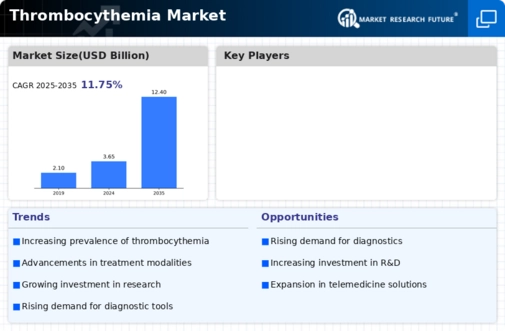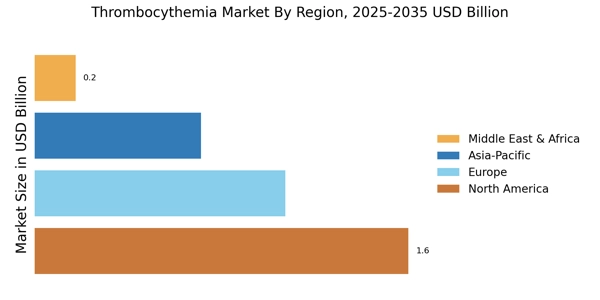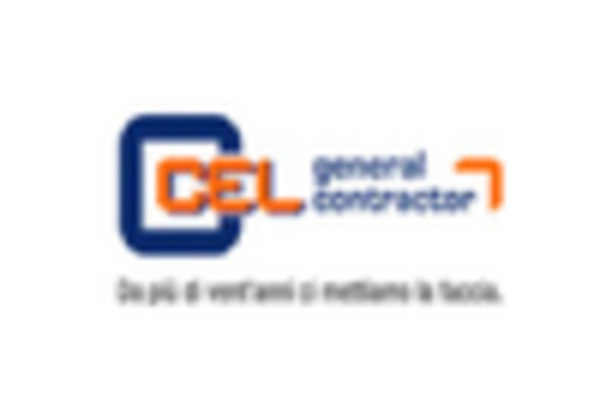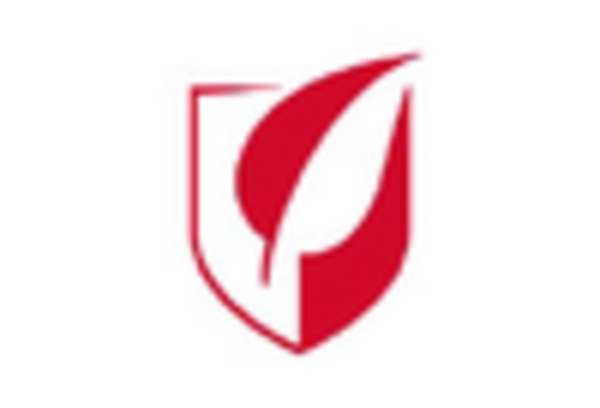Innovations in Treatment Modalities
Innovative treatment modalities are transforming the landscape of the Thrombocythemia Market. The advent of targeted therapies and novel pharmacological agents has provided new avenues for managing this condition. For instance, the introduction of JAK2 inhibitors has shown promise in effectively reducing platelet counts in patients with essential thrombocythemia. Market data suggests that the global market for thrombocythemia treatments is projected to grow at a compound annual growth rate of around 6% over the next five years. This innovation not only enhances patient outcomes but also attracts investment from pharmaceutical companies eager to capitalize on emerging therapies, thereby driving the Thrombocythemia Market.
Rising Incidence of Thrombocythemia
The increasing prevalence of thrombocythemia is a notable driver in the Thrombocythemia Market. Recent data indicates that the incidence of this condition is on the rise, with estimates suggesting that it affects approximately 2 to 3 individuals per 100,000 people annually. This growing patient population necessitates enhanced treatment options and diagnostic tools, thereby propelling market growth. As healthcare systems adapt to manage this rising burden, pharmaceutical companies are likely to invest in research and development of new therapies. The heightened awareness among healthcare professionals regarding thrombocythemia also contributes to early diagnosis and treatment, further stimulating the Thrombocythemia Market.
Regulatory Support for New Therapies
Regulatory support for the approval of new therapies is a significant driver in the Thrombocythemia Market. Regulatory agencies are increasingly recognizing the need for expedited review processes for innovative treatments that address unmet medical needs. This trend is particularly relevant for thrombocythemia, where novel therapies are being developed to improve patient outcomes. The approval of new drugs not only enhances treatment options but also encourages pharmaceutical companies to invest in research and development. As a result, the Thrombocythemia Market is likely to experience accelerated growth, driven by the introduction of effective therapies that meet regulatory standards.
Technological Advancements in Diagnostics
Technological advancements in diagnostic tools are reshaping the Thrombocythemia Market. The development of more precise and efficient diagnostic methods, such as next-generation sequencing and advanced imaging techniques, is facilitating earlier and more accurate detection of thrombocythemia. These innovations are crucial, as timely diagnosis can significantly impact treatment outcomes. Market analysis indicates that the diagnostic segment of the thrombocythemia market is expected to witness substantial growth, driven by the increasing demand for advanced testing solutions. As healthcare providers adopt these technologies, the Thrombocythemia Market is poised for expansion, reflecting the importance of accurate diagnostics in managing this condition.
Growing Awareness and Education Initiatives
The increasing awareness surrounding thrombocythemia is a critical driver for the Thrombocythemia Market. Educational initiatives aimed at both healthcare providers and patients are fostering a better understanding of the condition. As awareness grows, more individuals are likely to seek medical advice, leading to higher diagnosis rates. This trend is supported by various health organizations that are actively promoting information dissemination about thrombocythemia. Consequently, the demand for diagnostic tests and treatment options is expected to rise, thereby positively impacting the Thrombocythemia Market. Enhanced patient education also empowers individuals to engage in their treatment plans, potentially improving adherence to prescribed therapies.


















Leave a Comment